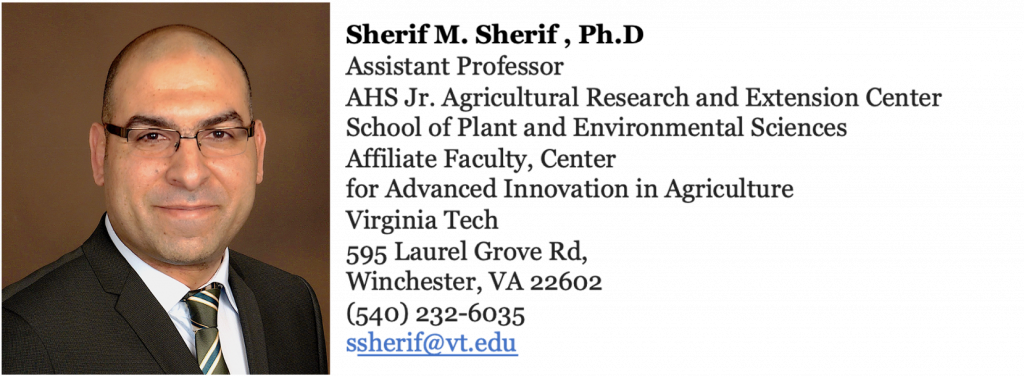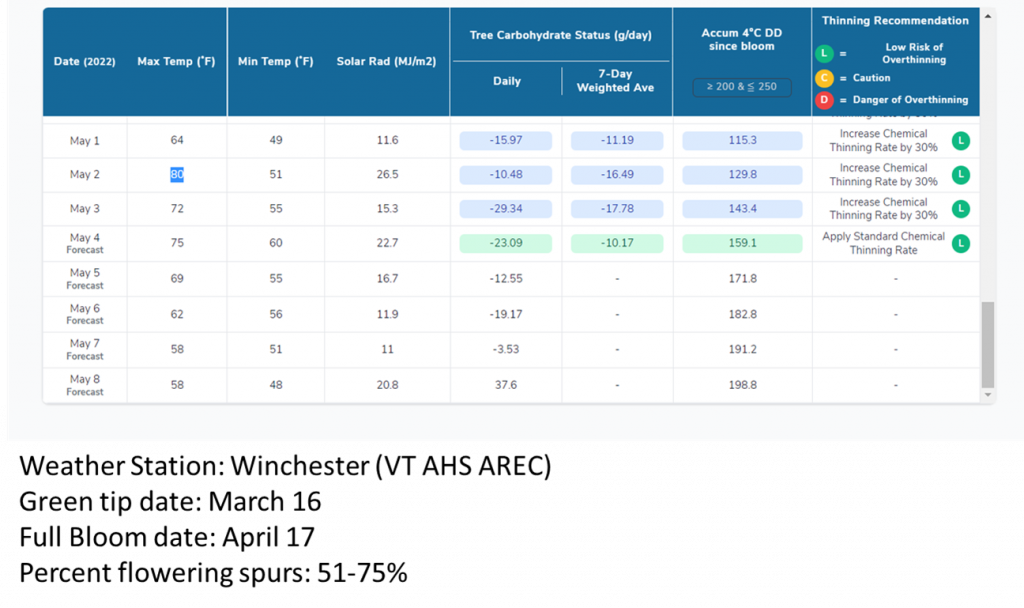As of 5:00pm on Sunday, March 19, the weather forecast predicts low temperatures ranging from 18-23°F tomorrow morning. These low temperatures could potentially damage the flowers and flower buds of various fruit trees, particularly stone fruits. However, in the Winchester/Frederick County area, the cold weather over the past two weeks has helped delay the progress of flower buds, minimizing the risk of critical damage. Most apple cultivars in the area are currently between green-tip and half-inch green stages, while peaches are between calyx red and first bloom (for early-blooming cultivars). Sweet cherries are mostly between the tight cluster and open cluster stages. For all these species, the critical temperature that would kill 90% of the buds is higher than what is forecasted for tomorrow. As a result, tomorrow’s frost should not be a significant concern for most orchards in the Winchester area, unless your orchard is located at a low elevation or has early-blooming peach cultivars. Additionally, apricot or plum trees in bloom might experience some damage.
Orchards in central and southwest Virginia face a greater risk from tomorrow’s frost. Current forecasts predict temperatures of 22-23°F in Nelson County, 24°F in Roanoke, and as low as 18°F in Carroll County. Orchards in these locations are generally 10 days to two weeks ahead of those in Winchester, with many peach cultivars possibly in full bloom and post-bloom stages, and apple cultivars between half-inch green and tight cluster stages. If this is the case, tomorrow’s temperatures could cause a 90% kill rate for peach flowers in most of these locations if the frost lasts for 30-60 minutes. For apples, the critical temperatures are 15°F for half-inch green and 21°F for tight cluster stages, so some damage may occur if temperatures drop below 20°F. Please refer to this link for critical temperatures at each developmental stage. http://royaloakfarmorchard.com/pdf/Critical_Temperatures_Frost_Damage_Fruit_Trees_Utah.pdf
What can you do now? Given the weather parameters for tomorrow’s frost, which is characteristic of radiation frost typically accompanied by a clear sky, low wind, and gradual temperature decline starting at midnight and reaching its lowest point just before sunrise, some tools may be effective in raising the temperature around tree canopies by 2-3°F. Wind machines, under-tree and overhead sprinklers, propane heaters, and fire dragons may be useful if the difference between the lowest temperature and the critical temperature is only 3°F. Unfortunately, no measures will be effective if temperatures drop to 18°F tomorrow. We can only hope that the weather forecast is inaccurate and conditions turn out to be more favorable.
What can you do after the freeze? Generally, six hours after a frost event is sufficient to begin observing damage to blossoms. You can collect branches from various locations within the orchard and use a razor blade to cut through peach flowers and apple clusters, looking for signs of damage to the ovary and style (female parts) in the center of each flower. Consult the following link for examples from our previous posts:



















